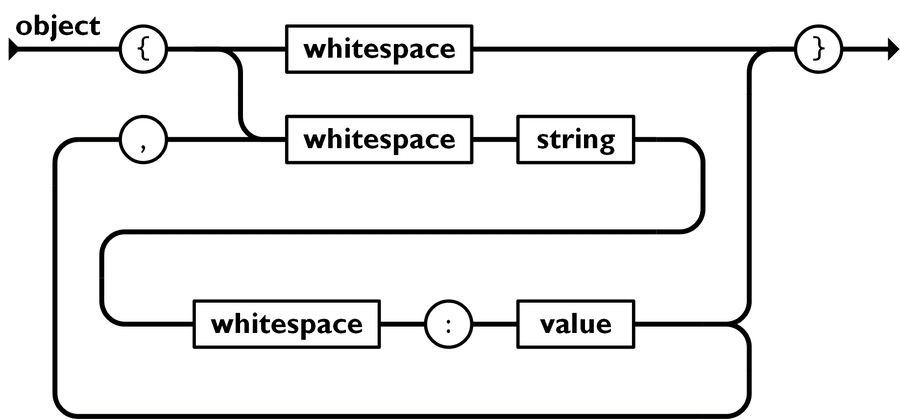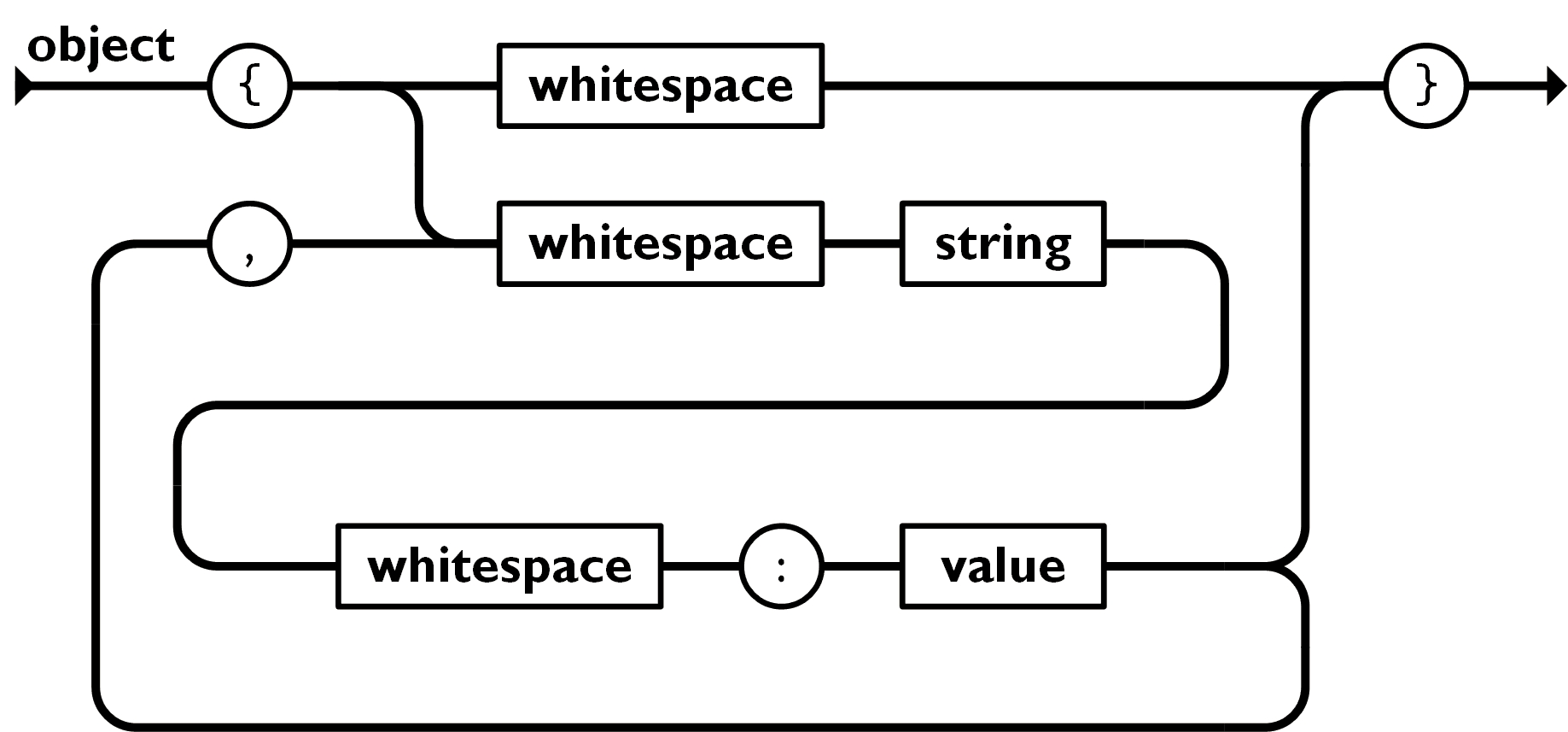写一个解析器-JavaScript的JSON解析器
JSON也是一种语言,他有自己的语法,你可以参考下json的规范。编写JSON解析器所需的知识和技术可以转换为编写JS解析器。
所以,先开始来写一个JSON解析器。
理解语法grammar
如果你刚才看了规范页面,那里有2个图解:
左边的语法图(或叫铁路图)

json
element
value
object
array
string
number
"true"
"false"
"null"
object
'{' ws '}'
'{' members '}'
...
...这两个图是等价的。
一个是可视的,另一个是基于文本的。通常将基于文本语法的语法(grammar syntax)Backus-Naur Form馈送到另一个解析器,该解析器对该语法进行解析并为其生成一个解析器。 说到解析器接收!
作为刚接触的,可能会第一想法就是使用这个可视化的线路图作为一个参照。

这是JSON中"object"的语法。
从左到右的走这个语法图。
像 {, ,, :, }这些,是字符,whitespace, string, 和 value是另外一种语法的占位符。因此,要解析"whitespace",我们需要查看" whitepsace "的语法。
因此,从左边开始,对于一个对象,第一个字符必须是一个左花括号{。然后有两种情况:
whitespace→}→ 结束whitespace→string→whitespace→:→value→}→ 结束
当然,当你碰到一个value时,你可以选择去:
→
}→ 结束→
,→whitespace→ … →value
你可以一直这样的循环,但是最终都要结束:
→
}→ 结束
实现解析器
从下面这样的结构开始处理
我们初始化i作为当前字节的索引,当i到达str结束时,我们将立即结束。
来实现一个object 的语法:
在parseObject中,我们将调用其他语法的解析,例如"string"和"whitespace",当我们实现它们时,一切都会起作用。
在这里,忘记了添加逗号(,)。,预示着要开始下一个循环。
基于上面的部分,添加了下面的一些代码:
一些命名约定:
当我们基于语法解析代码并使用返回值时,我们命名
parseSomething当我们期望字符存在那里,但是不使用这些字符,命名成
eatSomething当字符不存在的时候,命名成
skipSomething
实现eatComma和eatColon:
已经完成了parseObject语法的实现,但是这个解析函数的返回值是什么呢?
所以,需要返回一个js对象:
既然你已经看到了我实现对象语法的过程,现在是时候尝试一下数组语法了:

现在,看一个更有趣的语法,"value":

他是以一个"whitespace"开始,然后是任何可能的值:“string”, “number”, “object”, “array”, “true”, “false” or “null”,然后以"whitespace"来结束。
??是nullish coalescing operator。
parseKeyword将检查当前的str.slice(i)是否与关键字字符串匹配,如果匹配,它将返回关键字值。
这就是parseValue。
看下面具体的实现:
现在就实现了所有的语法。
处理unexpected输入
处理两种常见的错误:
Unexpected token
Unexpected end of string
Unexpected token
Unexpected end of string
循环里都有个判断,譬如下面这个
我们需要确保不要访问超出字符串长度的字符。在本例中,当字符串意外结束,而我们仍在等待结束字符}时,就会发生这种情况:
多做一些事
错误代码和标准的错误消息
下面这些是有用的关键字,会帮助用户出错之后去google定位。
更好的查看哪里出了问题
像Babel这样的解析器,将向您显示一个代码框架,带有下划线、箭头或突出显示错误的代码片段
打印出代码片段:
错误修正的建议
如果可能的话,解释出了什么问题,并给出解决问题的建议
如果可能,根据解析器目前收集的上下文提供建议
Last updated